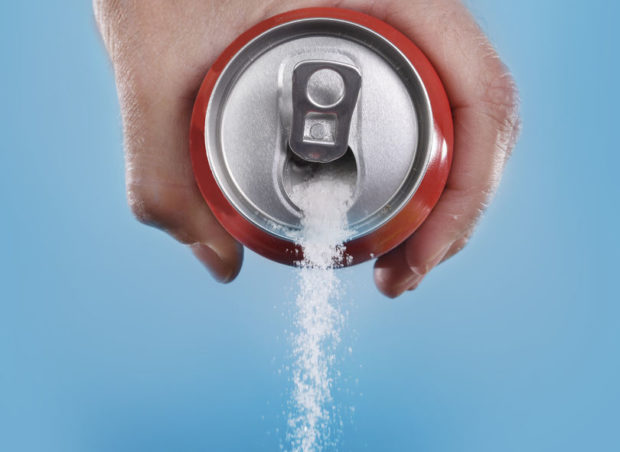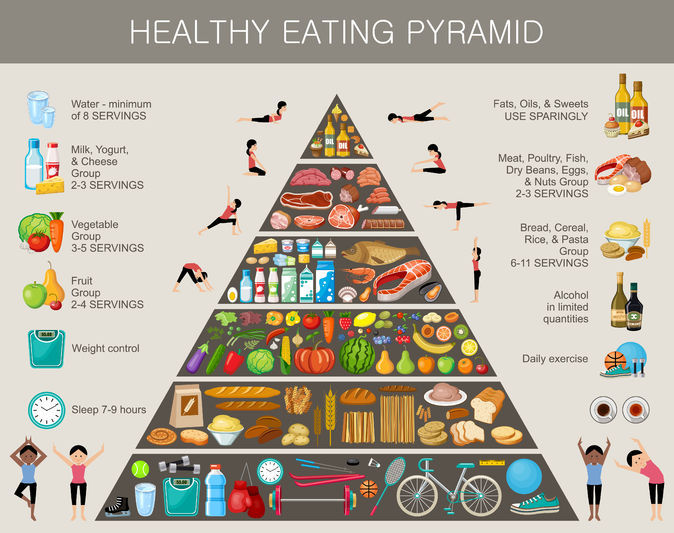
According to American endocrinologist Dr. Robert Lustig, sugar, not fat is the major threat against health worldwide.
Lustig has been advocating against sugar, citing that the food industry has been playing up the obesity epidemic as the culprit for malnutrition.
“We were told fat was the bad guy. Sugar is really the bad guy,” he said, citing that in the 1960s, the sugar industry paid Harvard scientists to blame saturated fat as the cause of heart disease.
The diabetes epidemic is what governments and health institutions should be addressing, given that it accounts for four diseases: type 2 diabetes, fatty liver disease, tooth decay and heart disease. “Your sugar consumption is killing you,” he said.
Good and bad fats also have to be distinguished from one another, given that good types of fat are essential in absorbing vitamins A, D, E and K.
The key to healthcare then is in the food we eat. “You can’t fix health without diet,” he stressed.
Metabolic syndrome among Filipinos
While Lustig stressed the diabetes epidemic, Professional Regulation Commission Nutrition and Dietetics chairperson Virgith Buena said both diabetes and obesity are health issues in the Philippines.
She agrees that sugar “per se” causes health problem, and has observed that with the upsizing of fast food portions came an increase in cases of diabetes in the country.
According to Mayo Clinic, a set of risk factors known as metabolic syndrome are correlated with a higher risk for heart disease, stroke and type 2 diabetes. This cluster of conditions are increased blood pressure, high blood sugar, excess body fat around the waist (known as visceral fat) and abnormal cholesterol or triglyceride levels.
A 2013 Food and Nutrition Research Institute (FNRI) survey cites that Filipino adults have the following metabolic syndrome risk factors: overweight and obesity (27 percent); hypertension (25 percent); high blood sugar (5 percent); and high total cholesterol level (10 percent).
The truth about fructose
Behind the host of conditions under metabolic syndrome is a type of sugar: the Philippine Center for Diabetes Education Foundation, Inc. (PCDEF) aims to increase awareness of the effects of fructose.
Fructose is found in fruits and sweetened food products, and is linked to metabolic syndrome.
Unlike glucose, which is distributed to the body for energy, fructose remains mostly in the liver. When there’s too much of it, the liver stores it as fat, which accumulates as visceral fat.
The stored fat increases the risk of cardiovascular disease and decreases insulin’s ability to regulate glucose levels, which can then lead to a higher risk for type 2 diabetes.
The best weight loss diet?
In the food pyramid, fats, oils and sweets are at the top because they are not essential and should be consumed the least.

Although fruits are in the second tier of the pyramid, Buena advises knowing a fruit’s glycemic index—meaning how fast it can make blood sugar shoot up—if you’re conscious of your sugar intake.
However, she still recommends a balanced diet, and emphasizes that it should suit your personal needs.
No diet is one-size-fits-all. Nutritionist dietitians interpret doctor’s prescriptions to draw up a diet plan, explains Buena.
They take into consideration the height, weight, age, activity and medical condition of the person to determine the percentage distribution of carbohydrates, proteins and fats that an individual should consume.
A general guide is to keep within the following ranges: Carbohydrates should be within 45 to 60 percent of your diet, protein 10 to 25 percent, and fat 20 to 35 percent.
She notes that each has a different amount of calories: one gram of carbohydrates and protein is equivalent to four kilocalories while a gram of fat is nine kilocalories. Thus in terms of portions, fat needs to be smaller since it provides more kilocalories.
Eating right without depriving yourself
In Buena’s experience, patients are less likely to follow advice if they are told not to eat something.
“Sa akin, lahat pwede (With me, everything is allowed),” she explains, and stresses the importance of compromise such as small portion sizes.
She advises small, frequent meals to avoid feeling hungry and binge-eating. “The stomach will follow the size of the food you consume,” she says.
Eating slowly could also help you eat less. “It takes 20 minutes for the stomach to signal to the brain that you are full.”
More than the calories you consume, the type of sugar and fat is what matters.
When it comes to carbohydrates, she recommends complex carbs such as grains, fruits, vegetables and root crops.
These have starches and fiber which make you full so you eat less, give longer-lasting energy, and also allow fat to cling to it so that it leaves the body.
Simple carbs include sweets, soda and fruit sugar or fructose. Without fiber, they are able to enter the bloodstream right away and raise blood sugar levels more quickly.
Like sugar, not all fats are equal. Artificial trans fats, which are found in French fries, cookies, doughnuts, fried chicken and a number of other processed foods, raise bad cholesterol and also decrease good cholesterol, increasing the risk for heart disease.
But fat is still essential, and there are many sources of good fats: unsaturated fats are found in olive oil, corn oil and peanuts which lower the level of cholesterol.
Eating right still needs to be complemented with an active lifestyle. When it comes to exercise, she advises, “Do not do something that you cannot continue.”
She also relates that the effect of exercise isn’t just weight loss, it is cumulative and serves to prevent diseases.
“Medicine is sick care, nutrition is healthcare,” says Buena. JB
RELATED STORIES:
Eating fat doesn’t make you fat; sugar does
It’s not the fat that makes you fat–but high fructose
Ketogenic diets can help weight loss, but come with risks, warns a nutritionist
How a plant-based diet can reduce hypertension and prevent stroke












































